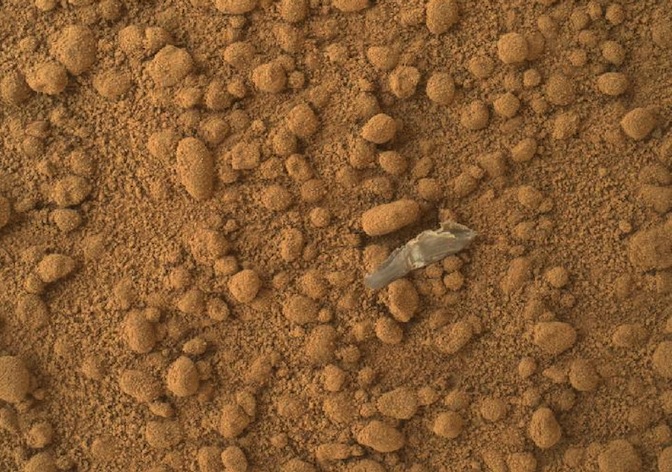Shiny objects found on the surface of Mars may, in fact, be native to the planet. Nasa’s Jet Propulsion Laboratory team sent commands to the Mars Curiosity Rover today to pick up a bit of the reflective stuff and, if all goes well, perform its first analysis of the landscape since landing.
[aditude-amp id="flyingcarpet" targeting='{"env":"staging","page_type":"article","post_id":557450,"post_type":"story","post_chan":"none","tags":null,"ai":false,"category":"none","all_categories":"business,offbeat,","session":"B"}']JPL says it will send commands to Curiosity today and will later analyze the scoop using “one of the Rover’s internal analytical instruments, the Chemistry and Mineralogy (CheMin) instrument.” It will be further analyzed by a tool called the SAM, or Sample Analysis at Mars instrument.
After taking high-resolution images of the first “shiny object,” the JPL team decided it was likely a piece of plastic or wire either from the Rover or from the craft that carried the Rover to Mars. However, after Curiosity picked up its second scoop, the team saw other pieces of reflective material within the clumps of Martian dirt.
AI Weekly
The must-read newsletter for AI and Big Data industry written by Khari Johnson, Kyle Wiggers, and Seth Colaner.
Included with VentureBeat Insider and VentureBeat VIP memberships.
This scoopful was discarded when the team saw more of the shiny material in the hole left by Curiosity’s scoop. The team didn’t want to introduce foreign particles to Curiosity’s internal analysis tools, but after reevaluating, JPL believes this could be a natural part of the Mars landscape.
Last week, Curiosity grabbed its first scoop and took video while it vibrated the regolith, or Martian dirt, to get rid of excess material. It later used the sample to clean the analysis tools and make sure no other debris was sitting in the Rover’s tubes.
Mars debris image via Nasa
VentureBeat's mission is to be a digital town square for technical decision-makers to gain knowledge about transformative enterprise technology and transact. Learn More

